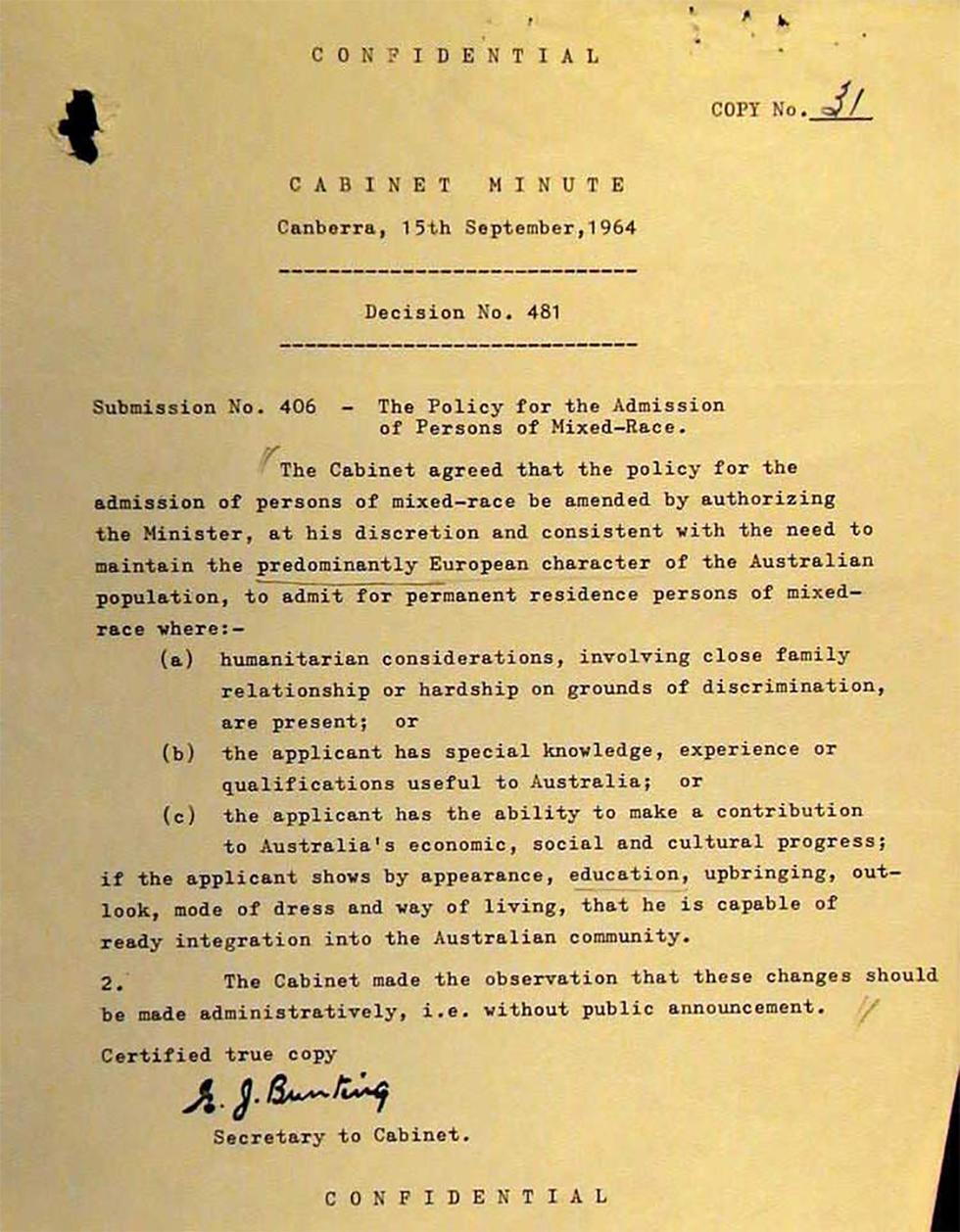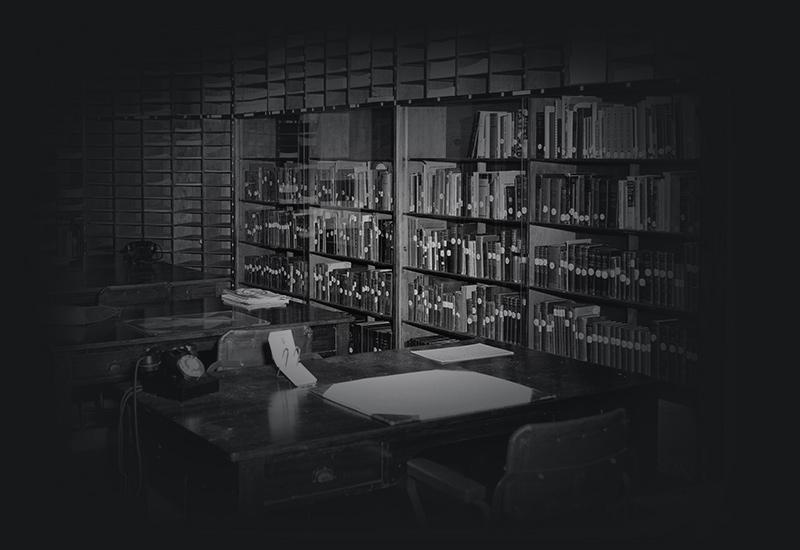
Document regarding a Cabinet decision to amend the Policy for the Admission of Persons of Mixed-Race.
Aboriginal and Torres Strait Islander people should be aware that the National Archives' website and collection contain the names, images and voices of people who have died.
Some records include terms and views that are not appropriate today. They reflect the period in which they were created and are not the views of the National Archives.


Document regarding a Cabinet decision to amend the Policy for the Admission of Persons of Mixed-Race.
[Header and footer] CONFIDENTIAL
COPY No. 31 [number handwritten.]
[Heading] CABINET MINUTE
Canberra, 15th September, 1964
Decision No. 481
Submission No. 406 – The Policy for the Admission of Persons of Mixed-Race.
The Cabinet agreed that the policy for the admission of persons of mixed-race be amended by authorizing the Minister, at his discretion and consistent with the need to maintain the [underlined in pencil] predominantly European character [end underline] of the Australian population, to admit for permanent residence persons of mixed-race where:-
(a) humanitarian considerations, involving close family relationship or hardship on grounds of discrimination, are present; or
(b) the applicant has special knowledge, experience or qualifications useful to Australia; or
(c) the applicant has the ability to make a contribution to Australia’s economic, social and cultural progress;
if the applicant shows by appearance, education [word underlined], upbringing, outlook, mode of dress and way of living, that he is capable of ready integration into the Australian community.
2. The Cabinet made the observation that these changes should be made administratively, i.e. without public announcement.
Certified true copy
[Handwritten signature] E. J. Bunting
Secretary to Cabinet.
Learn how to interpret primary sources, use our collection and more.
